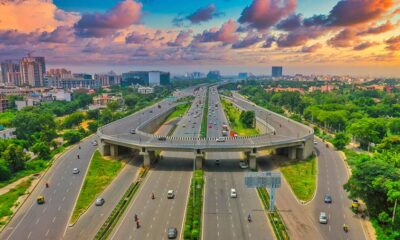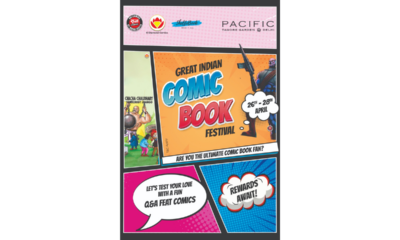Main
SBDs Emerge as New Favourites for Office Occupiers


Ramesh Nair, CEO & Country Head, JLL India
Across Indian office markets, secondary business districts (SBDs) are not only the younger cousins of the central business districts (CBDs) but also emerging as the new favourites due to the more modern buildings that suit requirements of corporates and office buildings that can be upgraded into superior grade-A assets.
A look at different office markets shows how striking the average age of a city’s SBD vis-à-vis its CBD is. For e.g., in Mumbai’s case, the age difference between SBD-Bandra Kurla Complex (also called the de-facto CBD) and the original CBD of Nariman Point and Fort area is a staggering 28 years. No wonder the CBD has shown decline in rents in recent years compared to all other micro-markets in Mumbai and corporates have shown consistent preference for the SBDs, especially BKC.
Similarly, the difference between Delhi’s CBD vis-à-vis its SBD (Gurgaon Prime) is more than 12 years, which is considerable. Gurgaon is the preferred destination for corporates and MNCs whereas the CBD (Connaught Place) is preferred mostly by Indian firms and those having to liaison more with the government. Some of the more well-known names in Delhi’s CBD are expected to move to AeroCity.
In Pune, the difference (of seven years) is still higher than that in other tier-I, II cities. While Mumbai and Delhi have been the traditional favourites of most Indian companies and MNCs – at least as far as setting up their Indian head offices is concerned, Bengaluru too has emerged as an IT and entrepreneurial hub in recent decades. Interestingly, the age gap between CBDs and SBDs in IT hubs is lower compared to Mumbai and Delhi.
| City |
Average age of CBD office stock (current, in years) |
Average age of SBD office stock (current, in years) |
| Mumbai |
38 |
10 |
| Delhi-NCR |
21 |
8.8 (Gurgaon Prime) |
| Pune |
15 |
8 |
| Hyderabad |
20 |
15 |
| Chennai |
10 |
9 |
| Bengaluru |
25 |
20 |
| Kolkata |
8 |
6 |
Source: JLL REIS
Other cities, which saw more office space come up especially in the last 12-15 years are younger markets overall, which explains the lower age gap between their business districts. In some of these cities, especially Bengaluru, the CBD still has many pull factors unlike Mumbai and Delhi’s CBDs. The age gap in Bengaluru’s case is only five years as both the CBD and SBD started seeing developments around the same time.
Like Bengaluru, Hyderabad too has an age gap of five years only between its business districts but the average age of its CBD (at 20 years) is five years younger than Bengaluru’s CBD. Kolkata (at 2 years) and Chennai (at 1 year) both have some of the lowest age gaps between their respective business districts. While Kolkata has the smallest grade-A office footprint in India, Chennai mostly has industrial parks with relatively lower demand for grade-A office spaces.
-



 News3 weeks ago
News3 weeks agoKW Delhi 6 Mall Onboards New Brands
-



 News4 weeks ago
News4 weeks agoManasum Senior Living Launches IKIGAI GOA, A Senior Living Community in North Goa, in collaboration with Prescon Homes
-



 News3 weeks ago
News3 weeks agoCommercial Realty Gets Tech Savvy: Fast Construction, Enhanced Convenience
-



 News3 weeks ago
News3 weeks agoGodrej Properties Sells Rs 3k cr+ Homes of Godrej Zenith, Gurugram, within 3 days
-



 News4 weeks ago
News4 weeks agoBridging India Divide: Top 5 Tier- 2 Cities to Focus On
-



 News4 weeks ago
News4 weeks agoMultipoint Connection – A Definite Boon
-



 News3 weeks ago
News3 weeks agoRBI’s Status Quo on Key Policy Rates to Help Maintain the Real Estate Growth Momentum, Say Industry Stalwarts
-



 News1 week ago
News1 week agoOlive Announces Dhruv Kalro as Co-Founder

















